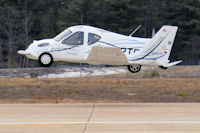In the wake of the crash of the Air France A330 into the South Atlantic, a number of outlets have begun speculating on whether this could lead to a push for improved oceanic communications and surveillance. One summary comes from the Associated Press:
The plane’s disappearance has prompted calls for the U.S. and other countries to hasten the move to GPS-based networks that would pinpoint planes and enable air traffic controllers to monitor them as they cross the ocean outside radar-range.
“It does seem a little disconcerting for the public who have not been familiar with the lack of surveillance in oceans,” said Bill Voss, president and CEO of the Flight Safety Foundation in Virginia. [..]
Voss believes that being able to better communicate with aircraft is more important from a safety point of view than surveillance. [..]
“This crash may put more pressure on international organizations to advance the use of satellite voice communications,” — technology that you would use when you hire a satellite phone to “go off to Antarctica or deepest darkest Africa,” said Voss.
The German news-weekly Spiegel had an in-depth article about issues related to in-flight data transmission:
If search teams fail to recover the flight recorder, which consists of two metal devices that record flight data and cockpit conversations, this question may never be answered. “It would be a real shame for aviation,” says Robert Francis, the former vice chairman of the National Transportation Safety Board, the agency that investigates aviation accidents in the United States. “If we want to avoid dramas like this in the future, we have to know what went wrong,” says the safety expert. For this reason, Francis wants to see all important flight data transmitted via satellite in the future, using ACARS technology. “This crash demonstrates how valuable this technology could be,” he says.
Significant upgrades to aircraft would not even be required, according to Francis. All that is needed, he says, is to reprogram the software in the communication system, turning it into a sort of online black box. Krishna Kavi, an engineer and professor at the University of North Texas in Denton, presented the US Federal Aviation Administration (FAA) with a similar system 10 years ago. “The cost is low,” he says. For the 256 parameters recorded by a black box, Kavi came up with a volume of data requiring transmission of four to eight kilobits per second. “This is a fraction of what mobile wireless devices transmit today,” says Kavi. [..]
But transmission of flight data is expensive. It takes up satellite bandwidth. Former NTSB official Francis is familiar with these problems. But he argues that a constant flow of data during flight would not be absolutely necessary. “We would already gain a lot if the system would only transmit data the minute the aircraft entered an unusual situation,” he says. Experts with Germany’s Federal Bureau of Aircraft Accidents Investigation in Braunschweig and the European Aviation Safety Agency in Cologne consider it “technically feasible” to report flight data on every flight to a central office via an online system. But pilots are the ones raising objections. “It would be tantamount to the full-scale monitoring of pilots,” says Jörg Handwerg of Cockpit, a German pilots’ association.
Safety expert Francis knows his proposal affects the personal rights of pilots. For this reason, he says, data would have to be encoded to prevent unauthorized individuals from listening in on radio communications. [..]
On the other hand, he says, nothing highlights the need for improved radio transmission of data than last week’s desperate search for wreckage from the downed Air France jet. According to Francis, ACARS should always transmit an aircraft’s position data, thus enabling rescue teams to search more effectively in an emergency.
“This crash demonstrates, in a drastic way, that we must improve our monitoring systems,” he says. In a world in which satellites perform monitoring and navigation tasks, says Francis, it should not be possible for aircraft to simply disappear.






















You must be logged in to post a comment.